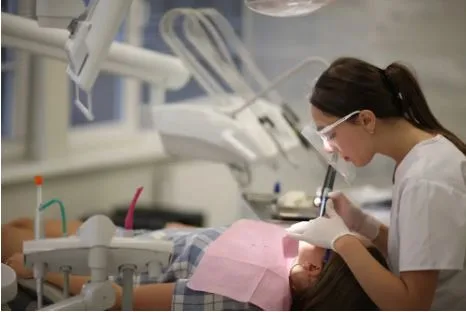What Are UCR Fees in Dentistry and How Do They Work?
If you’ve ever opened an Explanation of Benefits (EOB) after a dental visit and wondered why the “allowed amount” was lower than the price your dentist charged, you’ve run into the world of UCR fees. Understanding this concept helps you predict out-of-pocket costs, choose the right dentist, and avoid surprises at billing time. In this guide, we’ll demystify UCR—what it stands for, how it’s set, how it affects claims, and what you can do about it. If you’ve been searching for clarity on “UCR fees dental,” you’re in the right place.
What does UCR mean?
UCR stands for Usual, Customary, and Reasonable:
- Usual: The fee a specific dentist typically charges for a given procedure.
- Customary: A benchmark fee insurers set for a geographic area based on what many dentists in that area charge for the same procedure.
- Reasonable: An adjustment insurers may allow when unique circumstances justify a higher fee (complexity, complications, additional time).
In practice, the UCR figure is the maximum amount an insurance plan will base its reimbursement on for a specific procedure in a specific region—especially for out-of-network care. Your benefit percentage (say, 80% for a filling) is applied to the UCR, not necessarily to your dentist’s full charge.
Who sets UCR and how?
Each insurance carrier maintains its own UCR tables. They typically analyze:
- Procedure codes (CDT codes like D1110 for adult prophylaxis),
- Geographic area (often by ZIP code clusters or broader regions),
- Percentiles (e.g., paying at the 80th percentile means 80% of dentists in that region charge that amount or less).
Importantly, UCR is not a government-mandated price and there’s no universal UCR list. Two insurers can (and often do) use different data sources, regions, and percentiles—leading to different allowed amounts for the same procedure in the same city.
UCR vs. in-network negotiated rates
UCR matters most when you see an out-of-network dentist. With in-network providers (PPO), your dentist has agreed to contracted fees that are usually below their standard charges and, crucially, the dentist cannot balance bill above those fees. Your cost share is calculated from the negotiated rate.
With out-of-network providers, your plan will typically:
- Determine the UCR for the procedure in your area,
- Apply your plan’s coverage percentage to that UCR,
- Allow the dentist to balance bill you for any difference between the dentist’s charge and the UCR (unless your plan has special protections or caps).
That’s why the same procedure can cost you more out-of-network even when the benefit percentage (e.g., 80%) looks the same on paper.
Where UCR shows up on your EOB
Your Explanation of Benefits usually lists:
- Billed amount: The dentist’s fee.
- Allowed amount (or “eligible expense”): The insurer’s UCR for that code/region.
- Plan pays: Your benefit percentage times the allowed amount (minus any deductible).
- You owe: Coinsurance on the allowed amount plus any balance bill (if out-of-network), and any deductible still due.
A simple step-by-step example
Imagine you get a resin filling (posterior), billed at $200 by an out-of-network dentist. Your plan covers basic restorative at 80% after the deductible, which you’ve already met. The insurer’s UCR for that CDT code in your ZIP area is $150.
- Allowed amount (UCR): $150
- Plan pays: 80% of $150 = $120
- Coinsurance (your share of allowed): 20% of $150 = $30
- Balance bill (difference between billed and UCR): $200 − $150 = $50
- Your total out-of-pocket: $30 (coinsurance) + $50 (balance bill) = $80
Now compare that with an in-network scenario where the negotiated rate for the same filling is $130:
- Allowed amount (contracted): $130
- Plan pays: 80% of $130 = $104
- Your coinsurance: $26
- Balance billing: Not allowed in-network
- Your total out-of-pocket: $26
Same benefit percentage, very different cost—because UCR and balance billing come into play out-of-network.
Common misconceptions about UCR
- “UCR is the average price in my city.”
Not exactly. It’s an insurer-defined benchmark, often tied to a percentile and a specific regional mapping that may not match city boundaries. - “All insurers use the same UCR.”
They don’t. UCR varies by insurer, plan, data source, geography, and percentile. - “UCR is what a procedure should cost.”
UCR isn’t a price control or a fairness standard—it’s a benefit calculation tool. Your dentist’s actual cost structure, training, technology, and time may justify a higher fee. - “If the EOB says ‘allowed amount,’ my dentist must accept it.”
Only if your dentist is in-network. Out-of-network dentists are not bound by the plan’s allowed amount and can balance bill the difference.
How UCR affects different types of services
- Preventive (cleanings, exams, X-rays): Often covered at 100% up to UCR. Out-of-network you might still see a small bill if your dentist’s fee exceeds UCR.
- Basic restorative (fillings, simple extractions): Commonly 70–80% coverage up to UCR. Balance billing can add up here out-of-network.
- Major services (crowns, bridges): Often 50% coverage up to UCR. Since these procedures have higher fees and wider price variation, the gap between billed and UCR can be larger.
- Orthodontics: Plans may use separate lifetime maximums and UCR schedules, sometimes with age restrictions.
Practical tips for patients
- Ask for a pre-treatment estimate (pre-determination).
Your dental office can submit planned procedures and fees to your insurer. The insurer will respond with projected allowed amounts and your expected share, based on UCR or contracted fees. - Confirm in-network status.
In-network care eliminates balance billing and usually lowers your share. If you love your out-of-network dentist, request a cost estimate that includes potential balance billing. - Know your CDT codes.
For example, a routine adult cleaning is D1110, bitewing X-rays might be D0274. Having the exact codes helps your insurer give accurate UCR and coverage details. - Track your deductible and annual maximum.
UCR interacts with these plan features. Hitting your maximum early means future services may be 100% out-of-pocket, regardless of UCR. - Compare apples to apples.
If you’re shopping around, ask for fee quotes for the same CDT codes and the same materials/techniques to make a fair comparison. - Look for in-house membership plans.
Some practices offer discount plans that bypass insurance, which can be attractive if your plan’s UCR is particularly low or you’re out-of-network.
Guidance for dental practices
- Set fees thoughtfully.
Base fees on your true costs, time, technology, and clinical quality—not just on insurers’ UCRs. Your fees should sustain the level of care you deliver. - Know your market’s UCR—but don’t be ruled by it.
Understanding typical allowed amounts helps you predict patient balances and discuss affordability without compromising quality. - Proactive financial conversations.
Train your front desk to explain UCR vs. contracted fees, balance billing, deductibles, and annual maximums. Clear estimates reduce confusion and improve collections. - Offer options.
Phased treatment, financing, and membership plans can help patients proceed with needed care even when UCR-based coverage is limited. - Keep eligibility checks current.
Verify benefits and submit pre-authorizations when appropriate—patients appreciate transparency.
Quick glossary
- UCR (Usual, Customary, Reasonable): Benchmark maximum an insurer uses to calculate benefits, especially out-of-network.
- Allowed amount / Eligible expense: The fee the plan bases payment on (UCR or contracted rate).
- Balance billing: Charging the patient the difference between the dentist’s fee and the allowed amount (permitted out-of-network).
- Coinsurance: The percentage of the allowed amount the patient pays after deductible.
- CDT code: Standard procedure code used in dentistry.
FAQs about UCR fees
Are UCR fees the same as in-network fees?
No. In-network fees are contracted between the dentist and insurer, and the dentist agrees not to charge above them. UCR is an insurer benchmark for out-of-network claims and can lead to balance billing.
Do UCR fees change over time?
Yes. Insurers periodically update UCR schedules based on new data, but timing and methodology vary by carrier and plan.
What if my dentist charges more than UCR?
If the dentist is out-of-network, you’ll likely pay coinsurance on the UCR plus the difference between the dentist’s fee and UCR (balance billing). In-network, balance billing isn’t allowed.
Is there a way to avoid balance billing?
Seeing an in-network provider is the simplest way. Otherwise, request a pre-treatment estimate, discuss fees candidly with your dentist, and explore payment options or alternative treatment plans.
Understanding UCR fees in dentistry gives you a clear lens for reading EOBs, comparing providers, and budgeting for care. Whether you’re a patient trying to minimize surprises or a practice aiming to communicate transparently, remembering how UCR fees dental benefits are calculated—by code, by region, and by insurer—will help you plan smarter and pay less.







